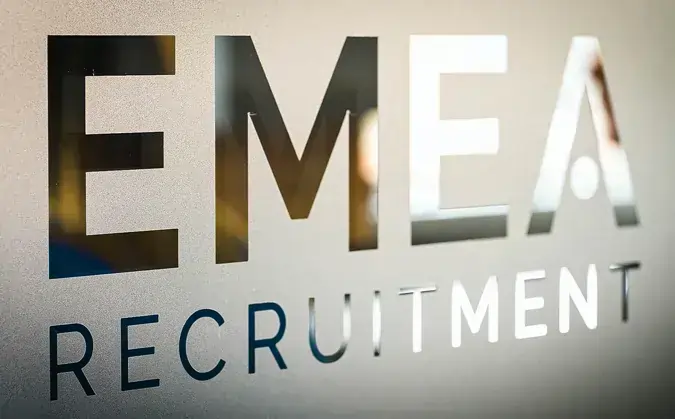Margaret Breen - Commercial Supply Chain and Merchandising Executive

Margaret Breen is a Swiss-based commercial Supply Chain and Merchandising executive with extensive omnichannel experience. Her international career spans diverse companies including Nike, Danone, Dufry, and Chalhoub Group.
In this intriguing interview, Margaret expressed her excitement for the evolution of the supply chain function, highlighting the role of technology and automation. She also shared her approach to change management and transformation, offering five key insights for leaders to ensure success, and explained why following her curiosity was her best career strategy.
With your impressive career in Supply Chain & Procurement, what keeps you excited about this field, and how do you see it changing in the future?
As a Supply Chain executive, I am excited to experience the journey of adaptation and possibilities in supply chain management. Supply Chain is a dynamic web of processes that offers a mosaic of challenges and opportunities, making it a truly fascinating industry.
I enjoy having the ability to impact the business positively and create tangible results. No two days are the same. The diverse ecosystem of stakeholders, including suppliers, distributors, customers, and internal departments, brings a sense of fulfilment when brought together.
I’m also a curious individual who enjoys problem-solving. Sometimes, it can be challenging, but I tell myself to stick with the problem and follow it upstream until I identify the root cause.
Looking ahead, Supply Chain will evolve as technology takes centre stage, and roles will change. We now have capabilities we once only dreamed of, and the sky’s the limit. The times when a Planner pressed F9 to manually refresh data and went for a coffee whilst waiting for the computer to finish are gone.
In the past, data was important but not crucial. Today clean data points are paramount, causing a shift for many organisations. Carefully piloted and enabled automation will equip teams with tools that transcend routine tasks, creating space for creative problem-solving, strategic planning and micro-managing a new market or product line.
The journey of combining technology, processes, and people promises an exciting chapter for the Supply Chain industry.
You've taken on many challenges in your career. Can you share a few risks you’ve taken that really paid off and helped you reach where you are today?
I've embraced various challenges that have shaped my journey. One significant risk I took, which truly paid off, was hiring for attitude over competencies. While it may not always be the conventional approach, I firmly believe that attitude is far more valuable than skills or industry knowledge. Competencies can be trained, but the right attitude is difficult to cultivate.
Another risk has been focusing on adding value beyond immediate key performance indicators. This means looking at the bigger picture of what moves the business forward and benefits our customers and partners. It’s not always a straightforward path, but staying true to core values and learning from failures and wins alike has helped get us where we are today. Success is rarely an overnight phenomenon or the result of any single decision - it’s the culmination of risks taken outside the comfort zone and a willingness to acknowledge learnings.
For me, the ability to see beyond the day-to-day and nurture the right mindset and values in my team has been crucial. These pillars have guided me over the years.
You've led a lot of change management projects, especially in digital transformation. What do you think are the 3-5 most important factors for making these projects successful?
Firstly, trust is the foundation for gaining people's buy-in and willingness to change. Be transparent, acknowledge difficulties, and follow through on commitments. This is incredibly important if you are new to leading a team.
Secondly, minimise uncertainty. There is no space in people's minds for creative solutions when they feel uncertain over what is to come in their personal future. The team's energy is best spent on the work and not guessing about strategy or plans.
Furthermore, focus on building and defining a shared vision. Having a clear vision for the future gives the team purpose, ensuring they understand the rationale and benefits, which helps motivate them through challenges.
Additionally, be specific in describing key milestones and metrics of success. This helps the team understand priorities, set progress benchmarks, and evaluate outcomes. Plan the work, test, learn, analyse, and adapt as needed.
Finally, communicate frequently. Share progress, wins, and lessons learned and ask for input. Listen and be responsive to feedback. This ongoing communication and engagement build momentum and support for the changes. With the right mindset and approach, executives can motivate teams to achieve transformative results.
Your career has followed a clear and impressive path. How did you plan your development to achieve such leadership roles?
My career path may appear impressive and pre-planned, but in truth, I never set out with a rigid strategy. I followed my curiosity and said yes to new projects and challenges that came my way. This openness led me down unexpected avenues beyond the bounds of Supply Chain, expanding my skills and perspectives.
I spent time learning about marketing, demand creation, financial structures, and category management. While satisfying my inquisitive nature, these experiences fostered an understanding of my colleagues' roles and goals. I gained insight into how all the pieces fit together and how each department contributes to overall success.
More than strategic career planning, it's been my willingness to pick up problems and see them through that opened doors over time. My broadened knowledge across disciplines helped me make connections and ensure my team and I added value to our peers.
In retrospect, following my curiosity was the best career strategy. I let each opportunity guide me to the next, allowing me to develop the diverse expertise and collaborative spirit needed for leadership roles. So I would conclude that my strategy was to follow my curiosity with a red thread of problems resolutions. It’s been an exciting journey of growth through saying yes.
Based on your experience with data-driven decisions in supply chains, where do you think the future of Supply Chain & Procurement is headed, especially with new technologies?
I am most excited about the power of data analytics and predictive insights. Today's technology allows us to accomplish so much more than we could just a few years ago. I remember when running complex calculations would freeze our computers for long periods.
In my past role, we have established an analytics framework with our data science team that provides descriptive, diagnostic, predictive and prescriptive key performance indicators. For instance, product availability is top of mind for every retailer and brand. We can instantly analyse our 98% availability and quantify 1.2 percentage points due to vendor fill rate issues, 0.7 points due to delivery delays, and 0.1 points due to quality problems. This granular, real-time visibility allows us to prioritize process improvements in a data-driven way (all illustrative).
Even more impactful is using predictive analytics to forecast future availability and identify potential causes of gaps while there's still time to act. This is a true game-changer for supply chain planning and execution.
Technology is the enabler, but human judgment and collaboration are still essential. The supply chain leaders who can best leverage data-driven insights to enable partnerships, transparency, and risk management will be poised for success. Overall, I envision the future of the supply chain as integrated, intelligent, and people-centred.
As a leader, how do you plan for your team’s future to ensure they meet the business needs and industry changes?
I think it all starts with the definition of a leader. My leadership role resembles that of a Sports Coach. As a leader, I plan for my team's future by focusing on alignment, capability, and development.
I like to start by ensuring alignment on mission and vision. The team needs a clear goal to work towards. I promote open communication within the organisation to understand changing business needs and industry trends. This allows us to pivot our strategy while retaining alignment on overarching goals.
I aim to build organisational capability by fostering a mix of skillsets and perspectives. Our team includes long-tenured experts who provide institutional knowledge, innovative thinkers who bring fresh approaches, and emerging leaders who will own new initiatives. This diversity of experience allows us to look at situations and challenges from a different angle without starting at the beginning. This helps build the resilience needed to meet challenges from multiple angles.
Let’s not forget the individuals. I invest in my team's professional development through customized goal-setting and development plans. People grow in different ways, so a tailored approach to coaching is my “go-to” which I promote at all levels of the organisation. Stretch assignments outside of comfort zones drive growth. With the right mindset and support, the team can navigate uncertainty and thrive in times of change.
In summary, through alignment, capability-building, and development, I aim to empower my team to deliver on current needs while continuously improving to meet their future personal career goals. Overall, with the right mindset and the agility to pivot, the team will be able to face the unruly water ahead.
What book or podcast has influenced your leadership the most, and why would you recommend it to others?
I have two recommendations; both are quite dated but still very much relevant. The first would be Who Moved My Cheese? by Spencer Johnson. This fun and clever parable tells the tale of four characters (two mice and two people) and how their approach to change is fundamentally altering their lives. It contains important lessons about change management that I reference frequently as a leader:
- Expect change - markets, technology, competition - the cheese will move. Be ready for it.
- Don't waste time wallowing when change happens. Act quickly.
- Be willing to step outside your comfort zone. Explore new solutions.
- Enjoy the journey as much as the destination. Have fun with change!
Change is the only constant, and as a leader, I cannot become complacent. I choose to adapt. Embrace the situation and look for the learnings. Who Moved My Cheese? provides simple yet profound guidance for leading people through change.
My second recommendation would be Tuesdays with Morrie by Mitch Albom. It is a book I read some 25 years ago, and it was a staple for all emerging leaders at Nike. In this moving memoir, Mitch reconnects with his former college professor, Morrie Schwartz, who is dying from ALS. During their weekly Tuesday meetings, Morrie imparts his life lessons and philosophies on living a meaningful life.
Three key lessons have stuck with me since reading that book. First, value the relationship; we are human, and connection is crucial in and outside the office. Secondly, love what you do. I believe that when you choose to take on a role, the best way to go about it is to love. When you are invested in the outcome, it is no longer about hitting a number, it goes beyond that. Lastly, acknowledge your area of control. Focus your energy on what you can influence and keep your eye on the horizon.
I believe there is always a learning in each experience. I have learnt from books, mentors, and team members.
Thank you to Margaret for speaking to our Procurement & Supply Chain recruitment team in Switzerland, led by John Byrne.
Views and opinions contained within our Executive Interviews are those of the interviewee and not views shared by EMEA Recruitment.






You can also use your social account to sign in. First you need to:
Accept Terms & Conditions And Privacy Policy